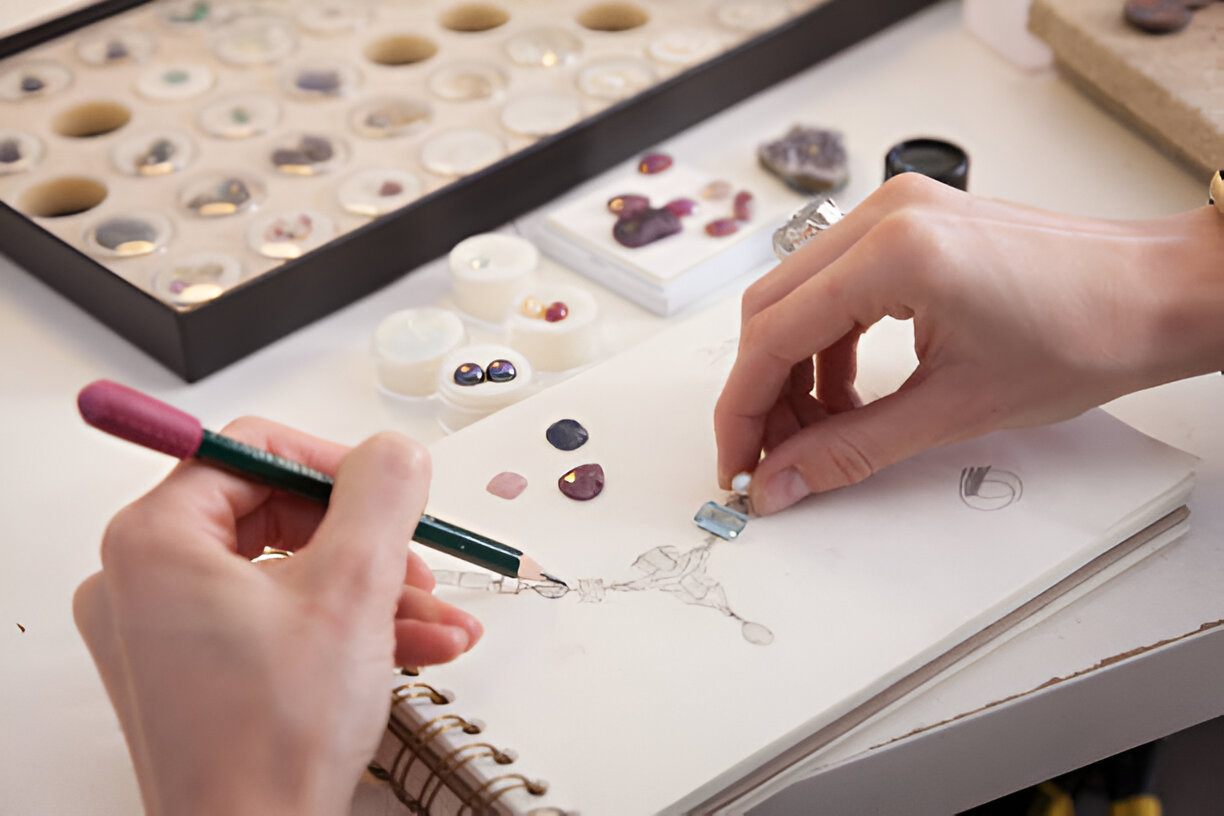Modern Trends in the Jewelry Industry: How Innovation is Redefining Luxury
For centuries, the jewelry industry operated on principles carved in stone: rarity determined value, tradition guided design, and the earth's depths held exclusive rights to precious gems. Today, this landscape is undergoing a profound transformation. Advanced technology, shifting consumer values, and innovative manufacturing processes are not merely supplementing traditional methods—they're revolutionizing the very foundation of what luxury means in the modern era.
The catalyst for this change extends beyond simple technological advancement. Contemporary consumers, particularly millennials and Generation Z, approach luxury with a fundamentally different mindset. They seek transparency, sustainability, and meaning in their purchases, driving an industry-wide shift toward more conscious production methods and ethical sourcing practices.
The Science of Perfect Diamonds
At the forefront of this transformation lies laboratory-grown diamond technology, which has evolved from experimental curiosity to mainstream luxury option in just two decades. The process involves two primary methodologies: Chemical Vapor Deposition (CVD) and High Pressure High Temperature (HPHT). Both techniques create diamonds that are chemically, physically, and optically identical to their earth-mined counterparts.
Dr. Sarah Chen, a materials scientist at the Gemological Institute, explains: "The precision available in laboratory conditions allows us to create diamonds with exceptional clarity and color consistency. We can control variables that nature handles randomly over billions of years, resulting in gems that often surpass natural stones in quality metrics."
This technological mastery has opened new possibilities for jewelry designers. Without the constraints of natural diamond rarity and pricing, creators can experiment with larger stones, innovative cuts, and bold designs that would have been prohibitively expensive using traditional materials. The result is a new aesthetic language in luxury jewelry, one that emphasizes creativity and craftsmanship over exclusivity alone.
For those interested in understanding the complete scope of these technological advances, resources that help consumers discover lab-grown diamonds provide comprehensive insights into how these innovations are reshaping both the production process and the final product quality.
Ethical Transparency in Modern Luxury
The jewelry industry's relationship with ethics has been complex, marked by concerns about mining practices, environmental impact, and labor conditions. Laboratory-grown diamonds address many of these issues by offering complete traceability and eliminating the environmental disruption associated with large-scale mining operations.
Traditional diamond mining requires moving approximately 250 tons of earth per carat, creating lasting environmental impact. Laboratory production, by contrast, operates in controlled facilities with minimal waste and significantly reduced water usage. This efficiency appeals to environmentally conscious consumers who refuse to compromise their values for luxury goods.
"The modern luxury consumer doesn't just want a beautiful product," notes industry analyst Marcus Rodriguez. "They want to understand the story behind it, know that it was produced responsibly, and feel confident that their purchase aligns with their personal values."
This transparency extends beyond environmental considerations to encompass social responsibility. Laboratory-grown diamonds eliminate concerns about conflict stones and exploitative labor practices, providing consumers with clear provenance and ethical assurance.
Design Innovation and Consumer Choice
The availability of high-quality, ethically produced diamonds has liberated jewelry designers from traditional constraints. Brands can now offer statement pieces with substantial stones at accessible price points, democratizing luxury without compromising quality or aesthetics.
This shift has particularly influenced engagement ring trends, where couples increasingly prioritize the symbolism of their choice over traditional status markers. A laboratory-grown diamond can represent not just commitment between partners, but shared values regarding sustainability and conscious consumption.
Contemporary jewelry houses are embracing this freedom, creating collections that would have been impossible under traditional economic models. Bold cocktail rings, dramatic chandelier earrings, and multi-stone necklaces showcase the creative possibilities when exceptional materials become more accessible.
LabRilliante: Pioneering Excellence in Innovation
Among the brands leading this transformation, LabRilliante exemplifies how modern jewelry companies can successfully merge technological innovation with luxury craftsmanship. The company has built its reputation on producing laboratory-grown diamonds that meet the highest quality standards while maintaining complete transparency about their production processes.
What distinguishes the labrilliante.com approach is their commitment to both technological excellence and traditional jewelry craftsmanship. Each diamond undergoes rigorous quality control, ensuring that the final product meets or exceeds the standards expected of premium natural stones. Their production facility utilizes the latest CVD technology while maintaining the meticulous attention to detail that defines luxury jewelry.
LabRilliante's design philosophy reflects the broader industry trend toward meaningful luxury. Their collections emphasize clean lines, exceptional stone quality, and versatile pieces that complement contemporary lifestyles. Rather than simply replicating traditional designs with new materials, they've developed an aesthetic language that celebrates both innovation and timeless elegance.
The brand's commitment to education sets them apart in a market where consumer understanding varies widely. They provide detailed information about their production processes, quality standards, and design philosophy, empowering customers to make informed decisions about their jewelry purchases.
Consumer Evolution and Market Response
Market data confirms what industry observers have noted anecdotally: consumer attitudes toward luxury are fundamentally changing. Recent surveys indicate that 73% of millennials are willing to pay premium prices for sustainable products, while 81% expect companies to make public commitments to environmental responsibility.
This shift extends beyond environmental concerns to encompass broader questions about value and authenticity. Modern consumers increasingly view true luxury as products that deliver exceptional quality while aligning with personal values. Laboratory-grown diamonds perfectly embody this philosophy, offering superior technical specifications alongside ethical production methods.
The jewelry industry's response has been swift and comprehensive. Major retailers now offer extensive laboratory-grown collections, luxury brands are investing in sustainable production methods, and designers are exploring new aesthetic possibilities enabled by more accessible high-quality materials.
The Future of Luxury Jewelry
As technology continues advancing and consumer values continue evolving, the jewelry industry stands at a pivotal moment. The companies that will thrive are those that embrace innovation while respecting the craftsmanship traditions that define luxury jewelry.
Laboratory-grown diamonds represent more than a new product category—they symbolize a fundamental shift toward conscious luxury. This transformation reflects broader cultural changes that prioritize sustainability, transparency, and meaningful consumption over traditional status symbols.
The modern jewelry consumer doesn't want to choose between ethics and aesthetics, between innovation and tradition, or between quality and accessibility. They expect products that deliver on all these dimensions, and the industry is responding with solutions that exceed these expectations.
This evolution in luxury jewelry demonstrates how technological innovation, when guided by changing consumer values, can revitalize traditional industries while preserving their essential character. The result is a marketplace that offers greater choice, better quality, and clearer ethical standing—benefits that serve both consumers and the broader industry as it adapts to contemporary expectations.


